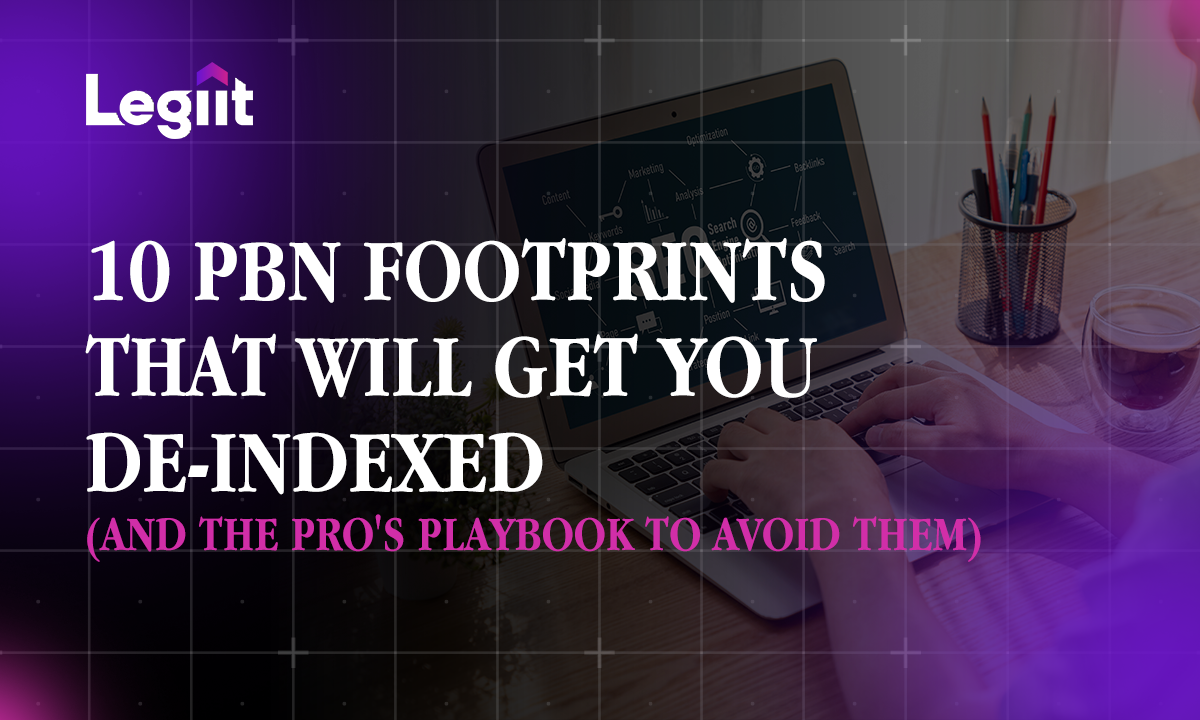Ecommerce SEO audit is essential to perform a thorough analysis that can help boost traffic and improve your online store’s visibility. By understanding how to carry out this SEO audit effectively, you can identify key issues and optimize your ecommerce site for better search engine rankings.
Why Ecommerce SEO Audits Matter for Success
Ecommerce SEO audits help your online store do better in search engines. When you run an ecommerce seo audit, you spot what needs fixing. This can boost conversions and increase traffic fast. These audits make your site rank higher and improve search engine rankings overall.
They also help make your website easier to use. That enhances user experience and keeps people coming back. Over time, a good audit helps build domain authority. And higher domain authority leads to organic traffic improvement. This means more visitors find your products without paid ads.
Common Ecommerce SEO Challenges and How Audits Help
Ecommerce sites often have technical seo audit problems that slow them down. Here are some common ones:
- Duplicate Content: Many ecommerce stores end up with duplicate content ecommerce pages, confusing search engines.
- Broken Links: Broken links annoy visitors and hurt crawlability.
- Crawlability Issues: A crawlability audit makes sure search engines can find and read all important pages.
- Indexing Problems: Indexing issues stop pages from showing up in search results.
- Site Architecture Concerns: Good site architecture seo improves how users move through your site.
- Slow Load Times: Slow load times cause visitors to leave early.
- Mobile Usability Testing: Since many shop on phones, mobile usability testing is a must.
Audits catch these issues so you can fix them before they cause bigger problems.
The Benefits of Regular Ecommerce Website Audits
You should regularly audit your ecommerce site for several reasons:
- Consistent Updates: Regularly auditing helps keep your content fresh, which search engines like.
- Performance Monitoring: You can monitor traffic, conversions, and other key stats better this way.
- Maintain Crawl Efficiency: Making sure your site crawls well means search engines index more valuable pages.
- Uncover Hidden Issues: Frequent checks reveal hidden problems that could slow down your site.
Doing regular ecommerce seo audits keeps your site working well and ready for whatever changes come next.
Defining Your Ecommerce SEO Audit Goals
Before you start an ecommerce SEO audit, you need to set your goals clearly. The main point of this kind of audit is to analyze and evaluate how well your site works now. You want to find problems that stop your site from ranking better or giving a good experience to visitors. Your goals should focus on things like improving your site so it gets more traffic, boosting sales, making the site easier for everyone to use, and helping your store appear higher in search results.
Having clear goals helps you choose which seo audit steps matter most. For example, you might:
- Find technical problems that block search engines from crawling or indexing your pages.
- Check if your keywords and content really match what shoppers want.
- Look at how fast your site loads and if it works well on phones.
- Make navigation easier so users stay longer and buy more.
By keeping these targets in mind, you can fix parts of your online store bit by bit. Plus, clear goals make it easier to see if the changes you make actually work.
Gathering Necessary Tools and Resources
You’ll need some good seo tools for ecommerce before starting the audit. These tools give you facts about what’s right and wrong on your site:
- Screaming Frog crawls your website to spot broken links, duplicate pages, bad redirects, missing metadata, and more.
- Ahrefs & Semrush help track backlinks, keywords, check competitors, and run detailed audits made for ecommerce sites.
- Google Analytics shows how visitors behave things like bounce rates or where people stop buying.
- Google Search Console tells you if Google can index your pages properly and flags crawl errors or security issues.
- PageSpeed Insights tests page load times and offers tips to speed things up a big factor in rankings (source: Google Developers).
- Google Mobile-Friendly Test checks if your site works well on mobile devices; this matters for users and Google rankings.
Getting these tools ready before the audit saves time later. You’ll get all the info needed without extra hassle.
Pre-Audit Website Analysis: A Quick Overview
Before jumping into a full technical seo audit, do a quick check of your ecommerce site. This gives a simple look at key parts:
- Site Architecture SEO See if URLs are tidy with clear layers that make sense for both people and search engines.
- Crawlability Audit Check whether bots can reach all important pages without being blocked by robots.txt files or too many redirects.
- Indexing Issues Look for pages left out of Google’s index because of noindex tags or conflicts with canonical tags that could lower traffic.
- Duplicate Content Check Find repeated product descriptions or category pages that hurt ranking power; fix duplicates by using canonical tags or writing unique content (source: Moz).
This quick scan finds urgent problems early on so nothing big gets missed when doing the full ecommerce seo audit later.
The Ecommerce SEO Audit Process: A Step-by-Step Guide

Technical SEO Audit: Site Architecture & Performance
A good technical SEO audit checks if your ecommerce site works well for users and search engines. Start by testing crawlability and indexability. Make sure search engine crawlers can visit and list your pages without trouble. Tools like Google Search Console help find website crawl errors like broken links or server problems.
Look at site architecture. It should have a clear hierarchy, clean URL structures, and good internal links. This helps spread link power to product and category pages.
Page speed matters a lot in ecommerce. Slow pages make visitors leave and lower sales. Use Core Web Vitals to measure speed:
- Largest Contentful Paint (LCP): How long the biggest part of a page takes to show.
- First Input Delay (FID): How fast the site reacts when users tap or click.
- Cumulative Layout Shift (CLS): How stable the page looks while loading.
Aim for LCP under 2.5 seconds, FID less than 100 ms, and CLS below 0.1 for best results (Google Developers).
Test if your site passes mobile-friendly checks with tools like Google's Mobile-Friendly Test. Mobile shopping is growing fast, so your site must look good on phones (Statista).
Crawlability and Indexability
Run a crawlability audit using tools like Screaming Frog or DeepCrawl to see how bots move through your site. Find indexing issues such as blocked pages via robots.txt or noindex tags on important content.
Check your sitemap is accurate. All key URLs should be in the XML sitemap with current last modified dates. Fix duplicate content by using canonical tags right so crawlers don’t get confused.
Doing this helps make sure your main product pages appear in search results. That means better organic visibility for you.
Site Speed and Core Web Vitals Optimization
Site speed affects both user experience and Google rankings. Improve it by:
- Compressing images without losing quality, maybe use WebP format.
- Using browser caching.
- Cutting down JavaScript run time.
- Using Content Delivery Networks (CDNs) to serve files faster worldwide.
Use PageSpeed Insights or Lighthouse to check loading speed focusing on what users see first on ecommerce pages (Moz).
Faster sites rank better and increase sales. For example, even one second delay can cut sales by 7% (Amazon Study).
Mobile-Friendliness and Responsiveness
Google mostly uses mobile versions of sites for ranking now (mobile-first indexing). Your site needs a responsive design that fits all screen sizes nicely.
Use mobile usability testing tools from Google Search Console to find issues. Focus on quick load times and smooth touch navigation since mobile shoppers want things fast no laggy buttons or misplaced calls-to-action like “Add To Cart.”
Better mobile responsiveness helps keep visitors around longer and lowers bounce rates from phone users who make up more than half of web traffic worldwide (StatCounter Global Stats).
International SEO Setup (If Applicable)
If you sell in different countries or languages, set up international SEO correctly. Use hreflang tags so Google shows the right language or country version based on user location. This stops duplicate content problems from similar regional pages appearing in search (Google Webmaster Guidelines).
Pick domain strategies like country domains (.ca, .uk), subdomains (uk.example.com), or folders (/uk/) based on what fits your business size best. Translate metadata carefully using local keywords popular in each market.
Structured Data and Schema Markup Implementation
Schema markup helps Google show rich snippets in search results, which can boost clicks:
- Product schema shows price and availability.
- FAQ schema answers common questions below product listings.
- Customer reviews schema displays ratings which build trust.
Use Google’s Rich Results Test tool to check structured data regularly for errors (Schema.org Ecommerce Guide). Good markup brings better listing features that drive more qualified traffic.
On-Page SEO Audit: Optimizing For Search Engines
Keyword Targeting And Mapping
Place keywords carefully along buyer journey stages from broad searches ("best running shoes") at top of funnel to specific buys ("buy waterproof running shoes online") near checkout.
Avoid keyword cannibalisation where multiple pages fight for the same terms, which hurts rankings.[Ahrefs Research shows aligned keyword targeting improves conversion funnels]
Find gaps where competitors outrank you due to missing topics; then create detailed guides answering those user questions to build stronger topic authority.
Metadata Optimization (Title Tags & Meta Descriptions)
Write title tags with main keywords naturally within 50–60 characters. Craft meta descriptions that sum up benefits clearly while staying under about 160 characters.[Search Engine Journal says strong CTAs here work well]
Use canonical tags to stop duplicate metadata between similar products or categories; apply noindex only when needed for example, on old promos to keep search focus sharp.

Product And Category Page Content Optimization
Make product listings clear with specs plus persuasive text highlighting value. Use good images/videos that follow WCAG accessibility rules.[Nielsen Norman Group says digital accessibility is key]
Handle out-of-stock items smartly: redirect temporarily unavailable products preserving link equity or show restock info clearly so visitors don’t bounce off frustrated.
Image Optimization And Alt Text
Shrink image file sizes without killing quality so pages load faster very important since ecommerce relies on visuals.[Google says alt text should describe images briefly for screen readers helping accessibility]
Addressing Duplicate Content And Cannibalization
Do regular checks for repeated text often caused by filters or sorting options which can compete internally hurting ranks.[SEMrush finds fixing cannibalisation grows traffic]
Fix broken links quickly with proper 301 redirects keeping navigation smooth and protecting domain authority over time.
Content Audit: Assessing Your Content Strategy
Spot missing informational topics that limit capturing broader audiences searching related stuff beyond buying queries like guides/tutorials solving common problems this improves blog strategy attracting backlinks building topic relevance naturally.
Study internal site search data to learn popular queries revealing hidden demand guiding new content ideas optimizing onsite navigation boosting shopping satisfaction.
Use good out-of-stock management syncing inventory status dynamically updating store front cutting frustration keeping buyers ready to buy when stock returns maintaining steady revenue despite supply issues.
Off‑Page SEO Audit: Building Authority And Trust
Backlink analysis looks at link quantity versus quality spotting harmful links that need disavowing protecting your site's reputation from penalties(Ahrefs Link Quality Report).
Check competitors’ backlink profiles finding chances for outreach using digital PR campaigns gaining strong placements scaling link acquisition methods supporting long-term off-page growth building trust among customers and search engines alike.
Backlink building works best with natural outreach combined with targeted publishing focusing on niche-relevant sites maximizing referral traffic supporting onsite SEO efforts creating lasting gains.
This ecommerce seo audit process covers all major parts needed to grow organic traffic while improving user experience through the buying steps a solid guide any online store should follow regularly.
Actionable Steps Based on Your Audit Results
After your ecommerce seo audit, you need to take action. Fix broken links first. Broken links annoy visitors and hurt your rankings. Then, optimize your pages to load faster. Slow sites lose customers. Make sure images have alt text so search engines can understand them. Also, check if your site meets accessibility standards.
Make it easy for people to find products by streamlining navigation. This helps reduce bounce rates and keeps visitors around longer. Add clear calls-to-action (CTAs) on every page to boost conversions. Don’t forget to secure your website with HTTPS; Google prefers secure sites and ranks them higher.
Use the keywords from your audit in product descriptions. Update title tags and meta descriptions regularly to get more clicks in search results. These steps help increase traffic and improve your rankings over time.
- Fix broken links
- Optimize load speed
- Add alt text for images
- Enhance accessibility
- Streamline navigation
- Add clear CTAs
- Secure site with HTTPS
- Update metadata often
- Use keywords in descriptions
Tracking Your Progress and Making Adjustments
Once changes are live, watch how your site performs closely. Use Google Analytics and Search Console to track seo metrics like traffic, bounce rates, conversions, and rankings.
Set up a regular SEO reporting schedule weekly or monthly works well to review what’s happening. Check which pages lose visitors even after improvements; maybe rewrite content or fix internal links there.
SEO is ongoing, so be ready to change your plan based on data. Don’t guess or assume what works; let numbers guide you instead. This keeps you improving visibility and sales steadily.
- Monitor performance using tools
- Track organic traffic & bounce rate
- Review keyword rankings
- Schedule regular seo reports
- Adjust strategy based on data
- Fix problem pages as needed
Ongoing Maintenance and Optimization Strategies
SEO never stops. Keep auditing your ecommerce site often to catch problems early. Use tools like Screaming Frog or SEMrush to find crawl errors and keep search engines crawling smoothly.
Fix issues like duplicate content, slow pages, or outdated info quickly because they hurt rankings over time. Keep your site healthy by updating plugins, backing up data regularly, and checking mobile usability since Google indexes mobile first.
Consistent SEO maintenance protects what you’ve improved after audits. It also helps you react fast when algorithms change so you don’t lose ground in search results.
Stay active with these ongoing steps:
- Run regular SEO audits
- Fix crawl errors promptly
- Remove duplicate content
- Speed up slow pages
- Update old content
- Keep plugins updated
- Back up site often
- Check mobile usability frequently
Doing all this means steady growth in traffic and sales without big drops down the rankings.
Maintaining Ecommerce SEO Health
Ecommerce Website Audit Frequency and Best Practices
You should regularly audit your ecommerce site to keep SEO health strong. Experts say doing a full ecommerce site audit at least once every three months works well. This kind of consistent auditing helps you spot technical problems, missing content, and slow spots before they hurt your traffic or rankings.
SEO health checks need to be part of an ongoing SEO strategy. Don’t treat them like a one-time chore. Constant action stops updates in product listings, site structure, or backlinks from causing new issues. Here are some good practices:
- Run audits quarterly or right after big site changes.
- Combine automated tools with manual checks for a better look.
- Fix major errors fast—think broken links or slow page speed.
- Keep an eye on core web vitals as part of site health maintenance.
- Watch keyword rankings and organic traffic to catch drops early.
By auditing often and fixing things quickly, you help your site grow over time. This keeps it ready for both visitors and search engines.
Staying Updated on Algorithm Changes and SEO Trends
Search algorithms change all the time. You have to stay ahead if you want your ecommerce site to rank well for terms like “ecommerce seo audit.” To keep visibility high:
- Check Google’s Search Central blog for official updates.
- Follow trusted SEO news sites like Moz, Search Engine Journal, or SEMrush.
- Look at your analytics right after updates to spot any ranking shifts.
Using this info in your ongoing seo strategy lets you change tactics fast. You can optimize for new ranking factors or fix parts of user experience that recent updates stress.
Also, keep focusing on mobile-friendliness, fast page loads, using structured data, and writing good content. These moves line up with what search algorithms want these days.
Legiit's Expertise in Ecommerce SEO Audits
Legiit knows ecommerce seo audits inside out. They help stores find ways to get more visitors by digging deep into their sites. With years working on different ecommerce platforms, Legiit offers advice that fits each business’s needs.
They mix detailed technical checks with smart tips on things like on-page optimization, backlinks, competitor comparison, and user experience improvements. Working with experts like Legiit means businesses get better results in search while keeping their seo maintenance going strong over time.
FAQs
What is an ecommerce SEO checklist and why is it important?
An ecommerce SEO checklist ensures you cover all critical SEO tasks. It helps improve site visibility, fix errors, and optimize product pages. Using a checklist keeps your audit organized and thorough.
How does an SEO site audit benefit an online store?
An SEO site audit identifies issues like broken links, slow page speed, and duplicate content. Fixing these boosts search rankings, enhances user experience, and increases organic traffic.
What are ecommerce SEO best practices to follow after an audit?
Follow structured data implementation, metadata optimization, mobile usability testing, and page speed improvements. Use keyword alignment and fix crawl errors regularly for sustained growth.
How can ecommerce metadata optimization improve search rankings?
Optimizing titles and meta descriptions with target keywords attracts clicks. Unique metadata prevents duplication and clarifies page relevance to search engines.
What are the essential SEO audit steps for ecommerce websites?
Start with technical checks like crawlability, indexing, and site speed. Follow with on-page SEO review including keyword targeting and content quality. End with off-page analysis like backlink profile assessment.
How do I ensure security and build customer trust through SEO?
Implement HTTPS encryption for secure browsing. Fix broken links and maintain website health to prevent penalties. Secure sites rank better and encourage visitor confidence.
Why is unique content critical in ecommerce SEO?
Unique content avoids duplicate content penalties. It improves keyword relevance, engages customers, and supports better indexing by search engines.
How do I evaluate my backlink profile during an ecommerce audit?
Check backlinks for quality and relevance using tools like Semrush. Disavow harmful links to avoid penalties. Build high-quality backlinks for domain authority growth.
What role does Google Analytics setup play in SEO audits?
Google Analytics tracks visitor behavior, conversions, and traffic trends. Data helps identify performance bottlenecks and guides optimization efforts.
How can improving page speed impact ecommerce performance?
Faster load times reduce bounce rates and improve user experience. Optimized images, caching, and minimized code help achieve better page speed scores.
When should I use redirect 301 in my ecommerce store?
Use 301 redirects for moved or deleted pages to preserve link equity. Redirects prevent 404 errors that harm user experience and rankings.
What is the importance of sitemap submission in SEO audits?
Submitting an accurate XML sitemap helps search engines find new or updated pages quickly. This improves indexing efficiency and organic visibility.
When should I apply the noindex tag on ecommerce pages?
Apply noindex on duplicate or thin content pages that offer little value. This prevents low-quality pages from harming overall site rankings.
How can local SEO optimization support an ecommerce business?
Local SEO targets nearby customers by optimizing listings and local keywords. It increases foot traffic for physical stores connected to your online presence.
Key Points for Comprehensive Ecommerce SEO Audit
- Internal Site Search Analysis: Understand popular user queries to refine content strategy.
- SEO Ranking Factors: Focus on user intent keywords aligned with buyer journeys.
- Conversion Rate Optimization: Streamline checkout flows to boost sales.
- SEO Audit Tools (Semrush): Use advanced tools for competitor benchmarking and backlink evaluation.
- Interactive Elements: Enhance engagement with features like live chat or reviews.
- WCAG Accessibility Standards: Ensure keyboard navigation support and visual stability compliance.
- Duplicate Content Removal: Regularly detect duplicates caused by filters or parameters.
- 404 Error Fixes: Monitor broken links; fix promptly with redirects.
- URL Structure Best Practices: Maintain clean URLs with logical hierarchy.
- Menu Usability: Design intuitive navigation menus for easy product discovery.
- Ecommerce Security & HTTPS Encryption: Protect data with SSL certificates for trust signals.
- Search Results Page (SERP) Optimization: Use schema validation to enable rich snippets.
- SEO Performance Metrics: Track metrics consistently to evaluate progress.
- Ongoing SEO Strategy: Adapt tactics based on algorithm updates.
- Voice Search Optimization: Optimize content for voice queries increasingly used by shoppers.
- Content SEO Audit & On-page Review: Assess quality, keyword use, headings, metadata regularly.
- Backlink Analysis & Competitor Benchmarking: Identify link opportunities by studying competitors.
- Site Speed Optimization & Core Web Vitals Focus: Improve LCP, FID, CLS scores continuously.
- Pagination SEO & International Setup: Manage paginated pages well; use hreflang tags for global reach.
- Crawlability & Indexing Issue Resolution: Fix robot.txt errors; optimize XML sitemaps frequently.
- Organic Traffic Improvement & Conversion Funnel Enhancement: Focus on steps reducing friction in purchase path.
- SEO Recommendations & Implementation Support: Prioritize fixes; track impact post-changes.
- Evaluate Site Infrastructure & Analyze Content Gaps: Identify missing topics that attract broader audiences.
- Prioritize SEO Steps for Quick Wins & Long-Term Growth
- Seamless User Experience & Build Domain Authority through Quality Content
- Ecommerce Site Analysis Using Website Audit Software Tools
- SEO Content Strategy Aligned with User Intent Keywords
- Internal Linking Strategy to Spread Link Equity Across Pages
- Backlink Quality Assessment Including Toxic Link Detection
- Competitor SEO Analysis to Inform Strategy Adjustments
- User Journey Optimization Including Mobile Usability Testing
- Ecommerce Growth Strategies Anchored in Data Insights
- Search Engine Ranking Factors Continuously Monitored
- SEO Tools Integration Like Google Search Console & PageSpeed Insights
- Website Crawl Errors Identification With Screaming Frog Tool
- HTTPS Security as Part of Ecommerce Platform SEO Compliance
- Site Navigation Designed Around User Interface Principles
- Organic Search Rankings Improvement via Ongoing Maintenance
These points ensure your ecommerce site remains optimized effectively over time.















 Download
Download